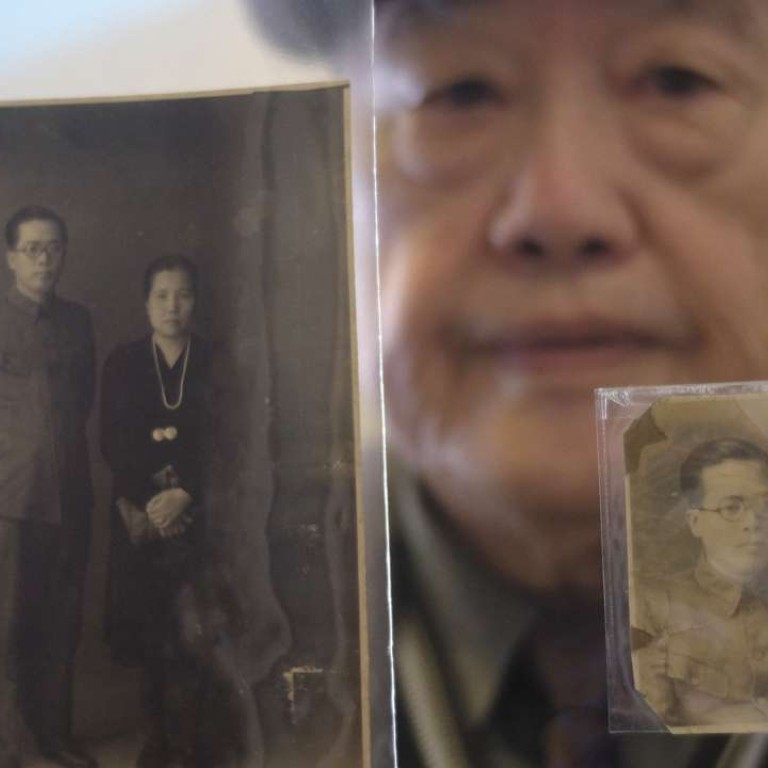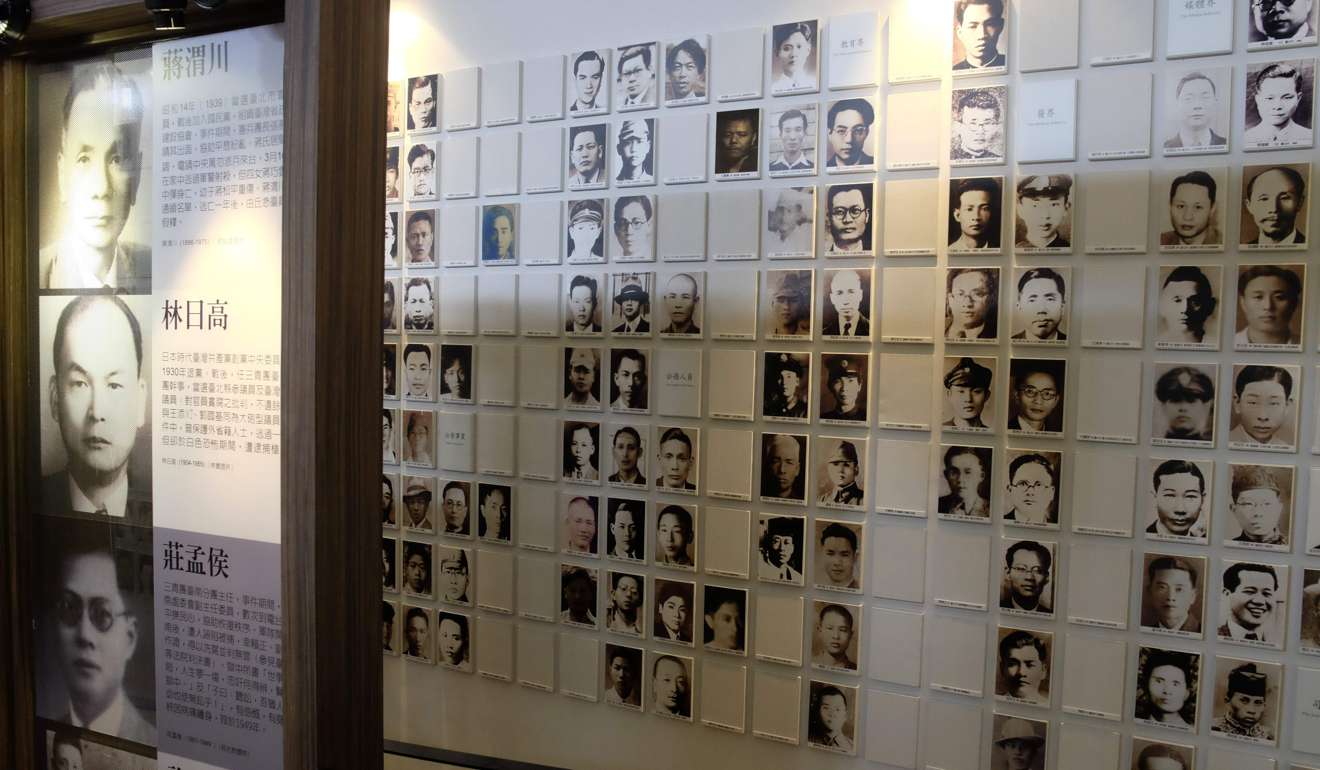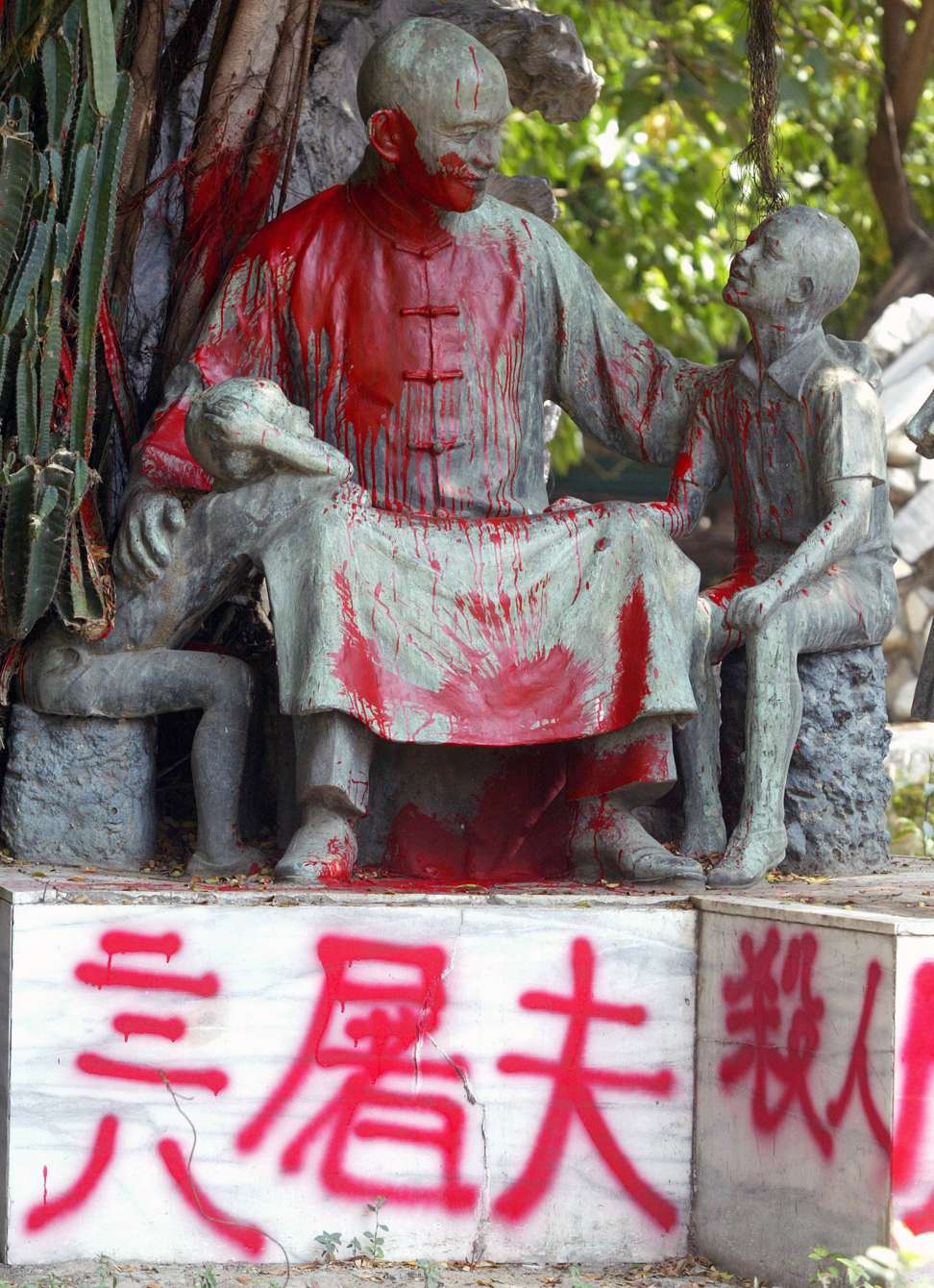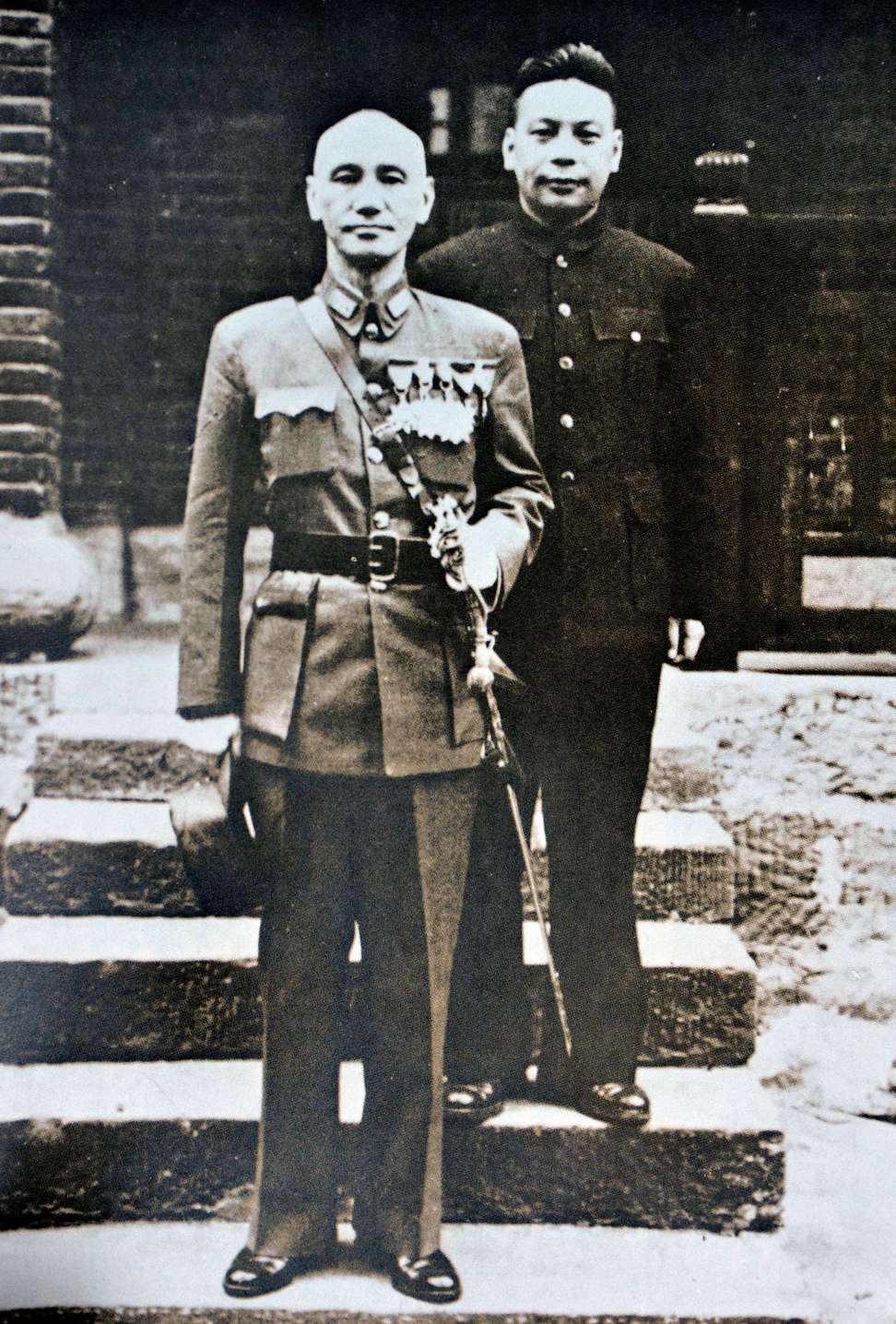
70 years after Taiwan’s ‘White Terror’, relatives of victims still seeking justice
Pan Hsin-hsing lost his father in the uprising against Chiang Kai-shek’s regime and will be among those on Tuesday calling for his image to be erased from the landscape
For Pan Hsin-hsing the sight and smell of lilies held a particular horror for many years – the pungent flowers decorated the room where his executed father lay before the funeral.
He was just six years old when Pan Mu-chih, a doctor and local politician, was arrested, tortured and killed in a 1947 massacre that was the precursor to years of political purges in Taiwan, known as the “White Terror”.

On Tuesday, Pan will speak at a national commemoration for the victims of the crackdown by troops under nationalist leader Chiang Kai-shek, whose Kuomintang party governed Taiwan at the time.
On behalf of many who lost loved ones, he will call for long-delayed justice.
Pan’s father was a critic of the KMT and was killed by a firing squad alongside other local politicians in southern Chiayi city, where there were anti-government riots.

Those riots were part of island-wide civilian unrest which started on February 28, 1947, after an inspector beat a woman selling untaxed cigarettes in Taipei. The immediate crackdown on protesters is estimated to have killed up to 28,000 people, in an incident known as the 228 Incident.
Pan also lost his 15-year-old brother, who was shot after going out to look for their father. The family pretended the young boy had committed suicide for fear of repercussions if they told the truth.
Another of his eight siblings held their dying father in his arms after finding the train station where the execution took place, says Pan, his voice cracking.
The body was brought to their family’s clinic, where he had worked as a doctor, and laid out in the waiting room so people could pay their respects.

For years, he associated lilies with that terrifying time. “I remember looking at the lilies and smelling their scent as men who came to pay their condolences got angry that my father was killed, while women wept,” he said. “It was difficult to bear.”
The massacres were a prelude to wider purges of government opponents between 1949 and 1987 under martial law imposed by Chiang and his son, whose KMT fled to Taiwan after it was defeated by Mao Zedong’s Communist Party in a civil war in mainland China.
Official records state about 140,000 people were tried by military courts during the White Terror, with between 3,000 and 8,000 executed. Many believe the actual numbers are higher.
Taiwan’s current government under President Tsai Ing-wen’s Democratic Progressive Party has promised to investigate the purges. But with the first report not due for three years, some activists are critical of what they consider lack of progress.
Yeh Hung-ling heads a campaign group seeking justice for victims’ families and has been helping them track down last letters from loved ones. Her group is calling for a new “political archives law” to allow them greater access to restricted files.

Pan says Chiang is to blame for his father’s death. He believes the memorial hall in the former leader’s name in Taipei should be renamed, and the statue of the leader removed. Some activists have threatened to topple the statue on Tuesday.
A government-funded report in 2006 found Chiang should take responsibility for the 1947 crackdown.
But campaigners say there has been no official recognition that he was the culprit, or his role in the wider purges.
“We demand the truth be clarified and those who were responsible be made accountable, with their names listed in official records and textbooks,” says Yang Chen-long, head of the Memorial Foundation of 228.
When Pan speaks alongside Tsai on Tuesday, he will renew his call for Chiang’s image to be rubbed from Taiwan’s landscape as a mark of respect for the dead.
Pan was one of the first Taiwanese citizens to reveal his family’s experiences during the purges – all discussion of the crackdown was taboo until martial law was lifted in 1987 and Taiwan began its journey to democracy.
After talking of his family’s trauma at a church service about 10 years ago, surrounded by lilies, Pan finally started to lose his phobia of the flower. “Speaking out helped heal the emotional wound,” he said.
The cigarette pack on which his father wrote his last message is now archived at the National 228 Memorial Museum in Taipei, along with the bloodstained shirt he wore on the day he died.
Pan said the purges should be remembered to prevent another tragedy in Taiwan.
“We don’t want revenge,” he said. “We want justice.”

.png?itok=arIb17P0)
